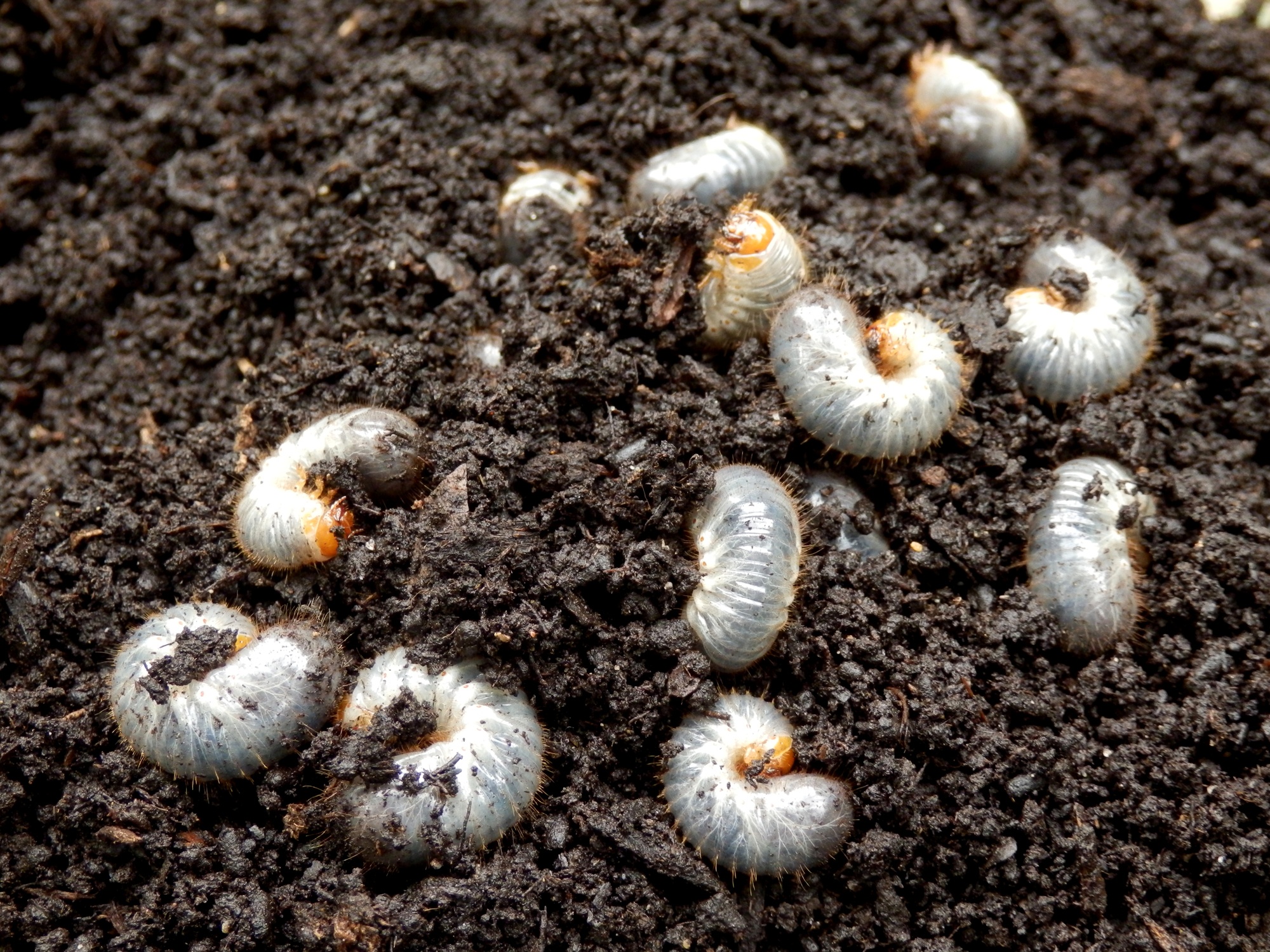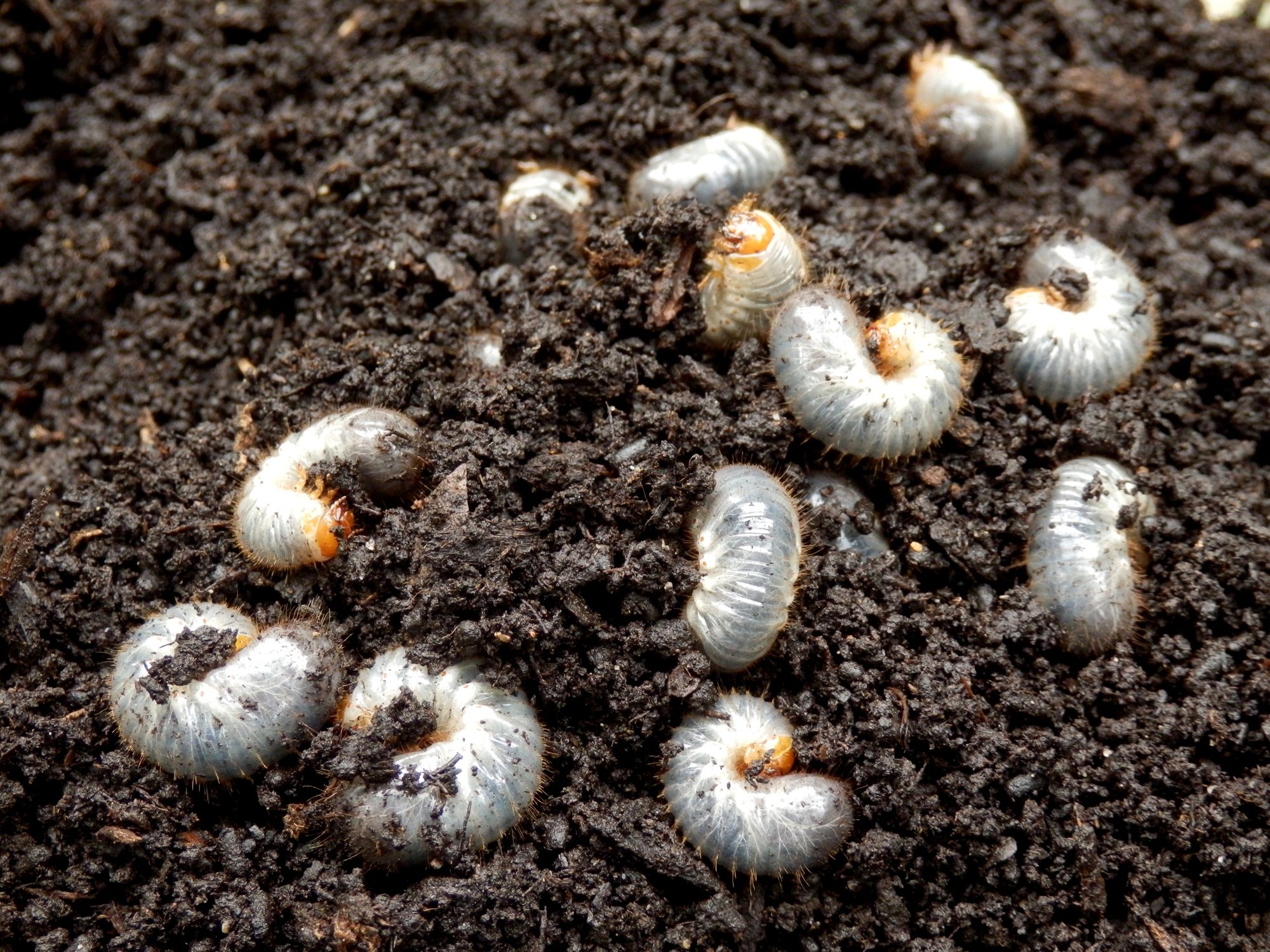
Happy June, folks! The weather is warm, the grass is green, and summer is just around the corner. What's not to love?
Ah yes, the European chafer. The European chafer is a common white grub species that attacks lawns across many parts of Canada, especially Ontario. It completes it’s life cycle in one year, and the adult beetles lay their eggs in June and July. These eggs hatch in late July early August and the larvae begin feeding almost immediately. This feeding continues into late fall before the white grub overwinters as a 3rd instar larvae. The beetle emerges in June to complete the life cycle, ending its reign of terror. The larvae has a “open zipper” raster pattern that distinguishes itself from other white grubs, so make sure to look for this when trying to identify what pest you are dealing with. The adult beetle is tan colour and measures about 15mm in length.
If your lawn can roll up like a carpet (a decimated root system), there may be a European chafer infestation. It takes only 8 or 10 grubs to ruin a square foot of lawn. Your lawn may feel spongy to walk on or skunks and other small mammals are digging up your lawn at night. The grubs are most active in late summer and fall, so the most opportune time of year to get rid of the chafer larvae is while they are young and before eggs hatch. It would be impossible to try and eradicate the pests by hand as it would require digging up significant portions of your lawn. Not for the faint of heart, that's for sure!
If you are struggling with European Chafer, don't panic! Read on to learn about natural solutions for a chafer infestation.
Try Nematodes
Beneficial nematodes are a naturally occurring variety of worm that are found all over the world. These worms are microscopic and replicate rapidly. Nematodes invade a grub through natural openings and work injects a toxin into the host killing it within two days. The nematodes then breed and plant eggs in the carcass.
Applying beneficial nematodes to the lawn when the soil warms up in May and June will ensure that the white grubs in the ground are eradicated before they can destroy your lawn. Some geographic areas may have timing differences based on soil conditions. The experts at Nutri-Lawn Ottawa can help you ensure the nematodes are applied correctly and see the best results possible. Depending on the type of larvae in your lawn, the damage may not be cyclical as Japanese beetles and European chafers have invaded eastern Ontario and mature in just one year.
Nematodes can be applied every three to six weeks as needed.
How to Prevent Further Chafer Infestations
A healthy vibrant lawn is more resistant grub damage than a stressed, under-treated lawn. Be sure to remove excess thatch (a layer of organic material on top of the soil) and to aerate the soil as this exposes the grubs to the air and natural predators. Beetles prefer lawns that are kept short. Lawns perform best when 2 inches of leaf is left after a mowing. Mowing your lawn too short may mean a little less work, but will leave your exposed to a host of other problems. There are a variety of companion plants that are toxic to grubs such as geranium and larkspur.
Nutri-Lawn Ottawa offers a full range of lawn care services including core aeration, overseeding, slitseeding, and organic topdressing.
Be sure to contact our professional team for a free quote so you can enjoy a healthy and vibrant lawn all summer long!






